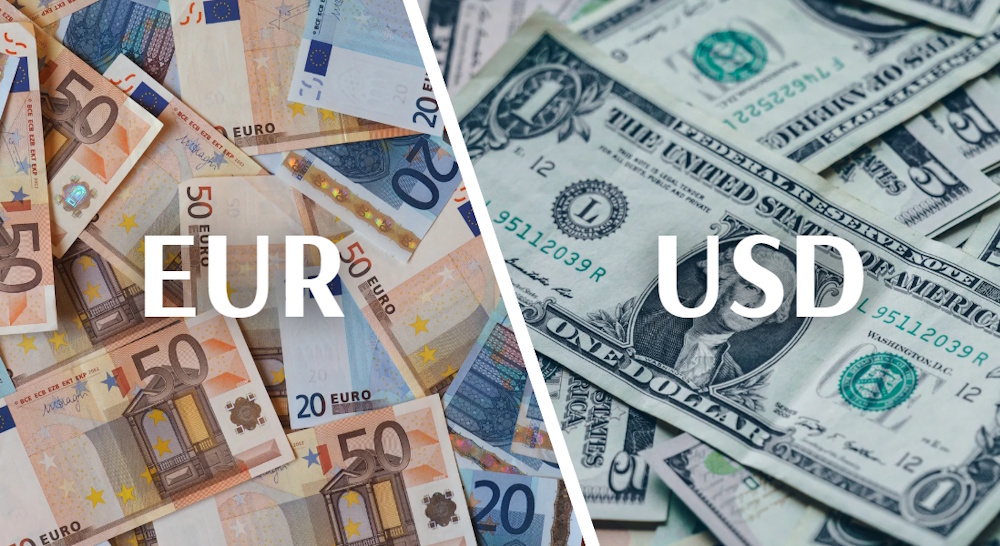The EUR/USD pair has experienced significant volatility this week, currently stabilizing around 1.1630 after rebounding from a two-month low close to 1.1545. The euro’s recent rebound can be attributed to a mix of U.S. dollar weakness, dovish comments from the Federal Reserve, and a decrease in political concerns in France that had momentarily unsettled the common currency. The pair’s recovery, however, is still delicate as global macroeconomic factors persist in exerting conflicting influences. Market participants are assessing indications of a more profound change in the Federal Reserve’s stance, the resurgence of trade tensions between the United States and China, and ongoing uncertainties regarding Europe’s economic path following disappointing industrial production figures. This week, Federal Reserve Chair Jerome Powell’s remarks significantly influenced expectations within currency markets. During his address in Philadelphia, Powell emphasized growing apprehension regarding the U.S. labor market while minimizing inflation risks. This stance has strengthened speculation that the Fed is poised to implement a 25 basis point rate cut in October, with an additional reduction anticipated in December. Reports currently indicates a 99.6% likelihood of a rate cut in the upcoming month, thereby solidifying the argument for monetary easing.
The recent change in tone has resulted in a decline in U.S. Treasury yields, with the 10-year yield nearing 4.02%, which has contributed to the U.S. Dollar Index falling below 99.00 for the second day in a row. A sustained break below the 98.40–98.70 support zone may lead to an acceleration of USD weakness, which would support a continued recovery for EUR/USD. The recent decline in the euro can be primarily linked to an increase in political risk in France, which caused the EUR/USD pair to drop from 1.17 to 1.15 temporarily. That move, however, is now perceived as tactical rather than structural. The 10-year OAT–Bund yield spread, an important indicator of French risk, reached its peak on October 6 and has since shown signs of stabilization, indicating a reduction in concerns regarding early elections. French President Emmanuel Macron’s choice to refrain from reshuffling his cabinet without parliamentary consensus has provided reassurance to investors regarding the continuity of policy. As these risks diminish, market participants are shifting their attention back to macro fundamentals instead of political instability, which has contributed to the euro’s recovery of lost value. The current U.S. government shutdown, which has now entered its third week, alongside the intensifying U.S.–China trade tensions, has heightened negative sentiment regarding the dollar. President Donald Trump’s threats to limit Chinese imports, following Beijing’s suspension of soybean purchases, have reignited market volatility. China’s introduction of new port fees on U.S. vessels has exacerbated tensions, while the People’s Bank of China’s firmer yuan fix contributed to increased dollar selling pressure during Asian trading hours.
Concerns arise among investors that the extended shutdown may postpone essential economic indicators, such as CPI and retail sales data, complicating the ability of policymakers and traders to assess growth momentum. The wider implications have resulted in a decline in global confidence regarding the dollar’s short-term stability, which has facilitated the rebound of EUR/USD. The most recent Eurozone industrial production figures indicated only slight progress, implying that the growth trajectory in Europe continues to be muted. However, leading indicators like PMI readings and export surveys suggest stabilization instead of a return to contraction. Investors are strategically positioning themselves for a recovery as we approach year-end, aligning with established seasonal trends. Analysis of historical data since 1999 indicates that when EUR/USD demonstrates positive performance in the first half of the year, it tends to conclude higher in the second half approximately 75% of the time. With 57 trading days remaining in 2025, numerous funds perceive the current pullback as a chance for accumulation rather than an indication of reversal.
From a technical perspective, EUR/USD has established a double-bottom reversal pattern on the four-hour chart, with support firmly positioned at 1.1545. The pair is currently evaluating the 50-day simple moving average (SMA) at 1.1635, while the 200-day SMA positioned around 1.1700 serves as the subsequent resistance level. A decisive breakout above 1.1660 may lead to targets at 1.1720 and 1.1775, thereby confirming the bullish pattern. On the downside, immediate supports are positioned at 1.1580 and 1.1540. Momentum indicators are currently favorable—RSI is close to 65 and MACD is on an upward trend—indicating that buyers are slowly regaining control. However, the pair is still susceptible to short-term corrections should there be any shifts in rate expectations.

